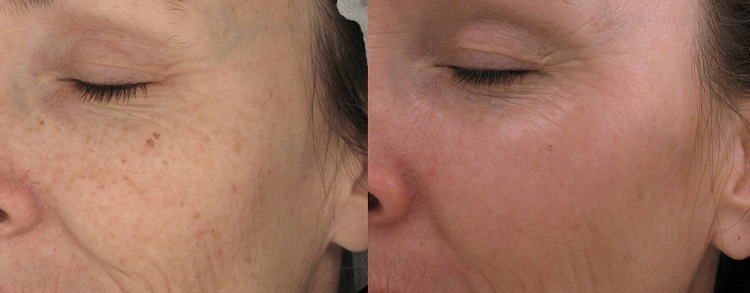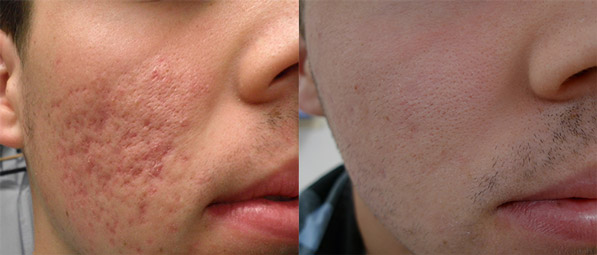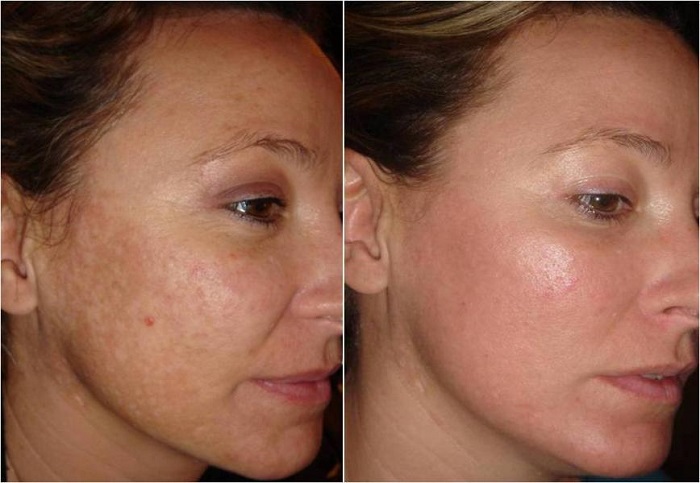Fractional laser resurfacing, or fractional photothermolysis, is used to reduce the look of scars, fine lines, wrinkles and damage to the skin caused by the sun’s ultraviolet rays, weather or trauma. It is also used to remove tiny, varicose veins called spider veins, unwanted hair and abnormal pigment such as liver spots and port wine stains. Fractional laser resurfacing gives a dermatologist greater control than other types of laser therapies. Because of this, the delicate areas around the patient’s lips or eyes can be treated safely. Let’s find out more about it!
How Does Fractional Laser Resurfacing Work?

The Basics
The therapy actually works by damaging the skin, but in a controlled way. Ordinary lasers damage not only the area of skin to be targeted, but damage healthy skin as well. Fractional laser resurfacing affects only that skin that needs to be treated and leaves the surrounding skin untouched.
The treatment is most often done on the face, but it can be done on the body. However, the patient should know that the skin of the chest, hands, and other places doesn’t heal as well as the skin of the face.
In one type of fractional laser resurfacing, a laser emits pulses of light that are absorbed by the water and chromophores in the patient’s skin. This is converted into heat energy which vaporizes the area of skin one microscopically thin layer at a time. This stimulates the body to grow new, fresh skin and to produce collagen, a springy protein that keeps the skin elastic and youthful. In another kind of fractional laser resurfacing, the laser does not vaporize the skin but simply tightens it.
The Process
Before the session begins, the dermatologist or nurse cleans the skin and marks the area to be treated with a pen. The patient will be fitted with goggles to prevent their eyes being injured by the laser, and wet towels may be placed on their face to absorb any surplus laser light.The patient is given a local anesthetic and may be given a sedative if they are very anxious. If the patient’s entire face is to be treated, the doctor may give them general anesthesia.
The dermatologist passes a hand device several times over the patient’s skin. The number of passes depends on how delicate the skin is and how deep the scars or wrinkles are. In between passes, the skin is soothed with water or saline solution. This not only keeps the patient comfortable but removes the destroyed skin tissue. After the session, the doctor paints an ointment over the skin.
The patient may feel a stinging or a sensation like a rubber band is being snapped against their face.
The recovery time depends on the size of the treatment area and how deep the lesions were in the skin. No matter how long the session took, the treated area will be tender, swollen and red for a few days. Any discomfort and swelling can be eased with a cold pack or a NSAID such as aspirin. The skin stays red for a few weeks, so it is important that the patient takes care of their skin while it heals. The patient may not see improvement until a few months after the treatment.
One session of fractional laser resurfacing costs from $400 to $1000. Because it is considered a cosmetic procedure, it is usually not covered by health insurance.
Pros and Cons of Fractional Laser Resurfacing

Pros
Most people who have fractional laser resurfacing are pleased with the results because:
- Fractional laser resurfacing is good at reducing the looks of wrinkles, especially those around the mouth and the eyes that were caused by sun damage. It is less effective on wrinkles that were caused by muscle movement, such as frown lines and marionette lines. These wrinkles tend to return because the muscles continue to perform the actions that caused them.
- Fractional laser resurfacing is also good for mild scars, but not as effective for deep acne scars.
Cons
Complications are unusual, but they occur:
- The swelling, redness and discomfort that come after a fractional laser resurfacing session are normal. However, some people have redness that lasts for longer than they expect. Normally, redness fades after about two months, but some people have it for as long as six months.
- Some patients may have changes in the pigmentation of their skin. Fractional laser resurfacing is best for fair-skinned people who mostly stay out of the sun. In dark-skinned people, the skin that was subject to the laser resurfacing tends to come in darker than the skin around it. Other people notice that the treated area is lighter than the surrounding skin. This hypopigmentation can be permanent.
- Scars are a risk, but one can treat them.
- Some patients find that their skin is easy irritated.
- Infection is a risk.
- A rare complication is ectropion, a condition where the eyelid furls up. This happens to people who’ve had fractional laser resurfacing around their eyes.
Making Fractional Laser Resurfacing More Effective
Patients can make fractional laser more effective by following these rules:
- The patient needs to rinse their skin a few times a day with cool water. They should not use soap or perfume on the skin. They should also be careful to change any bandages and ointments, and stay out of the sun for at least a week.
- After the skin has stopped peeling, they should use a sunscreen whenever they go outside.
- The patient should keep appointments with their doctor to check that the healing of their skin is on schedule.

Precautions to Remember Before Trying Fractional Laser Resurfacing
There are also a few precautions to take into consideration:
- The doctor will have told the patient to stop smoking and taking certain medications such as isotretinoin before their session. These chemicals can interfere with healing.
- People with dark skin should think twice about fractional laser resurfacing because of the mentioned pigmentation problems.
- Patients whose skin is easily scarred or very light sensitive should probably not undergo fractional laser resurfacing.
- Women who are pregnant or breastfeeding should wait to give birth or stop nursing before undergoing fractional laser resurfacing.
Fractional laser resurfacing represents an advance in laser resurfacing techniques. It has proven to be safe and effective in reducing signs of aging and skin damage. Did you try it? Let us know how it worked out for you in the comment section below.
